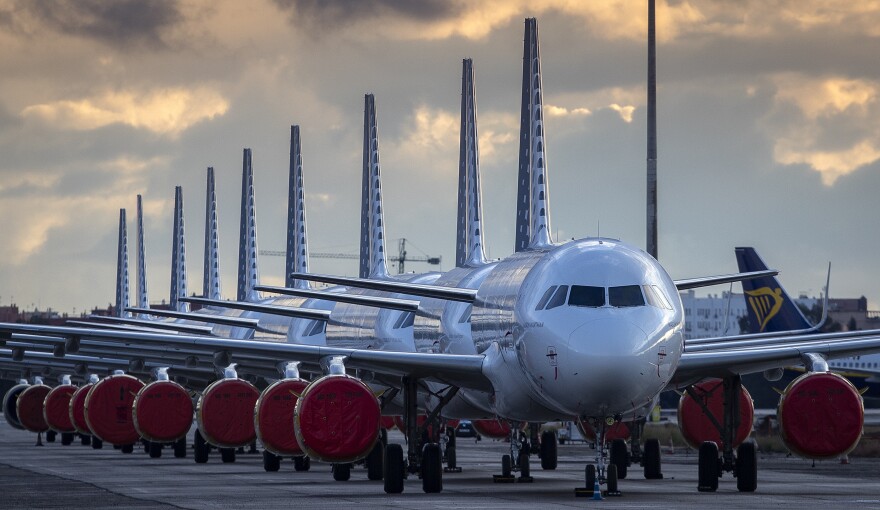Hawaii plans to reopen to trans-Pacific travelers without quarantine starting Thursday if the passengers can show a negative COVID-19 test. The procedures are as complex as a Rube Goldberg machine.
It's become even more complicated because each county -- Oahu, Maui, Kauai and Hawaii Island -- will now have its own secondary test conducted after a traveler arrives and paid for by the county.
The state also plans a pilot surveillance program, randomly testing 10% of travelers four days after their arrival. The tests will be voluntary and paid for by the state.
Many details of the testing programs are still unclear, but here's what we know at this point. (Keep in mind that these requirements can change and some quarantine exceptions are already in place for certain essential workers and those with health issues.)
1. Mainland visitors or returning residents over 5 years old
Travelers can avoid the 14-day mandatory quarantine if they take an approved COVID-19 test within 72 hours of departing on their final leg of travel to Hawaii.
If they don't have their negative pre-flight test results by the time they arrive, they will need to quarantine until they do.
Those who don't take the pre-travel test will need to quarantine when they arrive.
These are the tests that the state will accept and where travelers can take them. Some locations may be unaware of the state's pre-testing program, especially as the program first kicks off.
Once travelers receive a negative test, they can upload the documentation to the state's Safe Travels digital system. All travelers must register on Safe Travels, where they also must answer a health questionnaire 24 hours before departure.
If travelers have trouble with the Safe Travels system, they can call the service desk at 855-599-0888 from 10 a.m. to 10 p.m. HST or visit the FAQ site.
2. Mainland visitors or returning residents under 5 years old
Children under 5 will not be required to take the pre-flight test to avoid quarantine so long as they are accompanied by an adult who has taken the test with negative results.
3. Interisland travelers
Those flying from within the state to Maui or Kauai can avoid the mandatory quarantine by taking a pre-flight test similar to that for trans-Pacific travelers. They must use the Safe Travels digital system to upload their negative test results and fill out the health questionnaire.
Hawaii Island, however, is not participating in this pre-test waiver. Those who plan to travel to the Big Island from within the state will still need to quarantine for 14 days.
Those arriving on Oahu from another county are not subject to the quarantine.
No quarantine is required for Maui County residents traveling within the county, say from Lanai or Molokai to Maui.
4. Maui County's secondary test
Maui County will ask trans-Pacific travelers to Maui, Molokai and Lanai to voluntarily take a second test after arrival at the approved testing centers.
The county wants this second test conducted between 48 hours and 72 hours after arrival. Since it is voluntary, travelers can refuse to take it. But the county plans to offer local business discounts as an incentive.
The county's managing director said on Monday that PCR nasal swabs will be given. The tests are more uncomfortable than other tests but are more accurate.
5. Kauai County's secondary test.
Like Maui County, Kauai County is setting up a voluntary program for second tests. These will be requested on day three of arrival on Kauai.
The tests can be taken at the approved testing centers.
6. Hawaii Island's secondary test
Hawaii Island is requiring a mandatory second test of travelers participating in the pre-test program when they arrive at Big Island airports.
The tests will be antigen tests, which are not as accurate as PCR tests, but are less invasive and results are quicker. Travelers won't have to quarantine while they wait for the results.
Those who test positive will be given a PCR test. If they again test positive, they will need to quarantine.
7. Oahu's secondary test
Oahu won't have a second test initially. Mayor Kirk Caldwell said the City and County of Honolulu doesn't have the testing capacity at the moment but hopes to build up to it.
However, Caldwell is seeking Gov. David Ige's approval to test travelers who haven't taken the pre-flight test and is working on piloting a mobile lab at the Honolulu airport for that purpose.
8. More information
Information on travel to Hawaii is available on the state's travel website along with FAQs about the reopening procedures.



